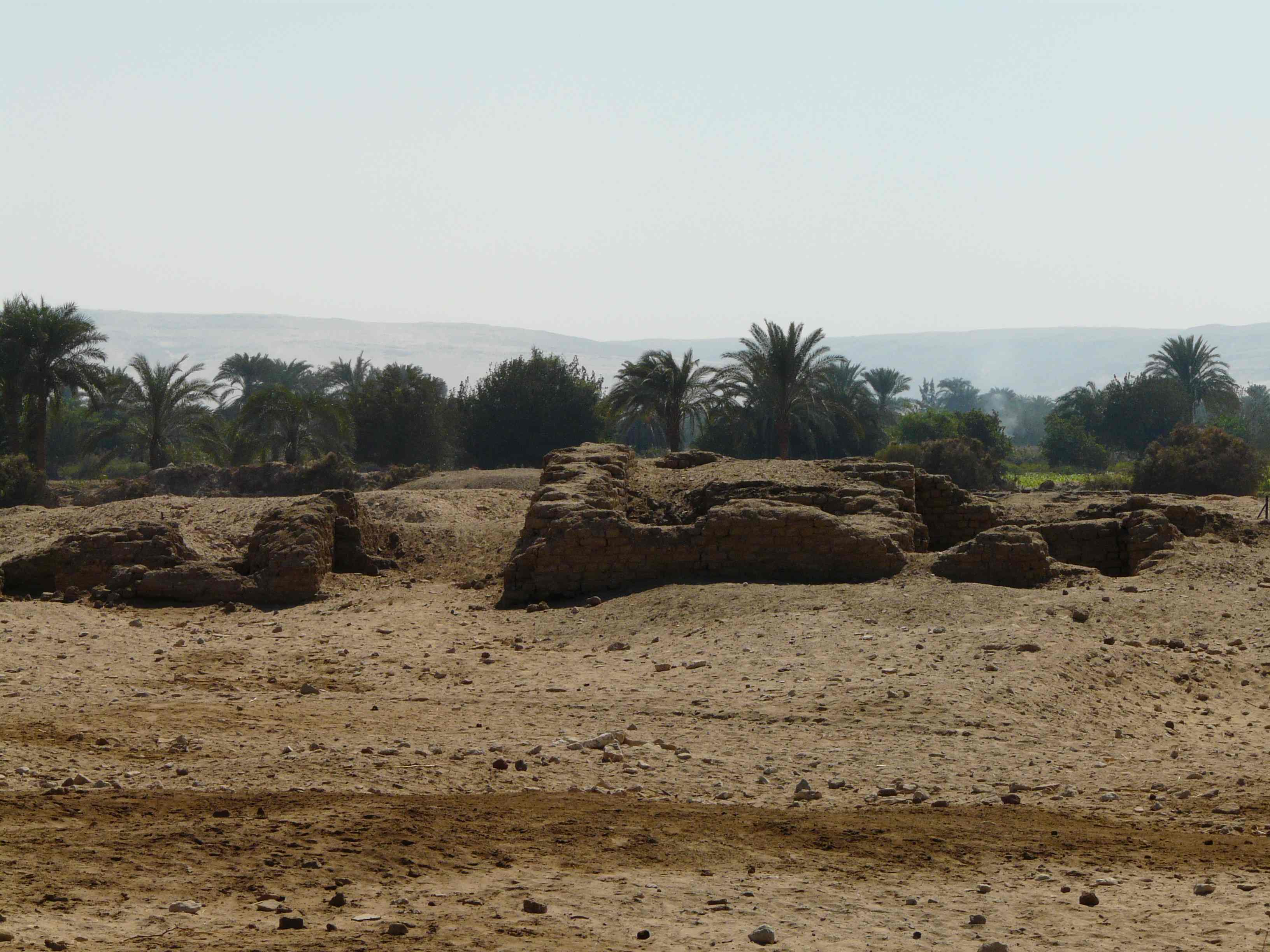Kom el-Nana on:
[Wikipedia]
[Google]
[Amazon]
 Kom el-Nana is an
Kom el-Nana is an
/ref> In the northern part of the enclosure brick ovens were found, findings suggest a bakery and brewery. Traces of a building (the "northern shrine") were also found. Most of the northern part was overbuilt by a 5th-6th century Christian monastery that reused the original walls, so the southern part, which was not overbuilt, is better preserved; the following buildings were excavated: * A stone-floored pylon * The rectangular Southern Pavilion, surrounded by sunken gardens; * A central platform with a building including a columned hall and other rooms * The Southern Shrine, consisting of rooms and a western portico. In the southeast corner of the southern enclosure stood a group of houses in two sets, with garden plots.
 Kom el-Nana is an
Kom el-Nana is an archaeological site
An archaeological site is a place (or group of physical sites) in which evidence of past activity is preserved (either prehistoric or historic or contemporary), and which has been, or may be, investigated using the discipline of archaeology a ...
near the ancient Egyptian city of Akhet-Aten. It lies south of the city and east of the modern village of el-Hagg Quandil. For a long time its ruins were thought to be those of a Roman military camp, but between 1988 and 2000 Barry Kemp excavated remains of an Amarna period stone temple with garden and subsidiary buildings including a bakery and a brewery. Neither the original name nor the owner of the complex has been identified.Nicholas Reeves: Akhenaten – Egypt's False Prophet. London, Thames & Hudson, 2005. , p.126 It is likely to have been a sun temple and is very similar to Maru-Aten. It consists of a brick enclosure with an area of 228×213 m; it is divided into two unequal parts by an east-west wall. It is likely that pylon gates opened on all four outer walls. Since it stood at a very prominent place – at the southern end of the so-called Royal Road, the main street of Akhet-Aten – it's possibly identical with the sunshade temple of Nefertiti
Neferneferuaten Nefertiti () ( – c. 1330 BC) was a queen of the 18th Dynasty of Ancient Egypt, the great royal wife of Pharaoh Akhenaten. Nefertiti and her husband were known for a radical change in national religious policy, in which ...
mentioned on the boundary stelae.The Amarna Project: Kom el-Nana/ref> In the northern part of the enclosure brick ovens were found, findings suggest a bakery and brewery. Traces of a building (the "northern shrine") were also found. Most of the northern part was overbuilt by a 5th-6th century Christian monastery that reused the original walls, so the southern part, which was not overbuilt, is better preserved; the following buildings were excavated: * A stone-floored pylon * The rectangular Southern Pavilion, surrounded by sunken gardens; * A central platform with a building including a columned hall and other rooms * The Southern Shrine, consisting of rooms and a western portico. In the southeast corner of the southern enclosure stood a group of houses in two sets, with garden plots.
Sources
{{Authority control Amarna